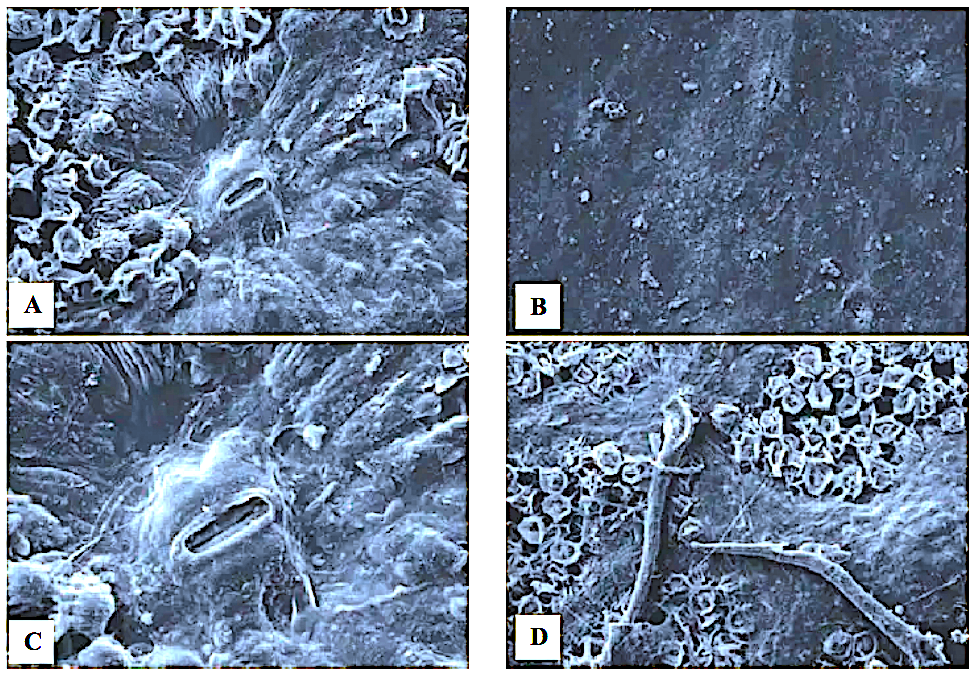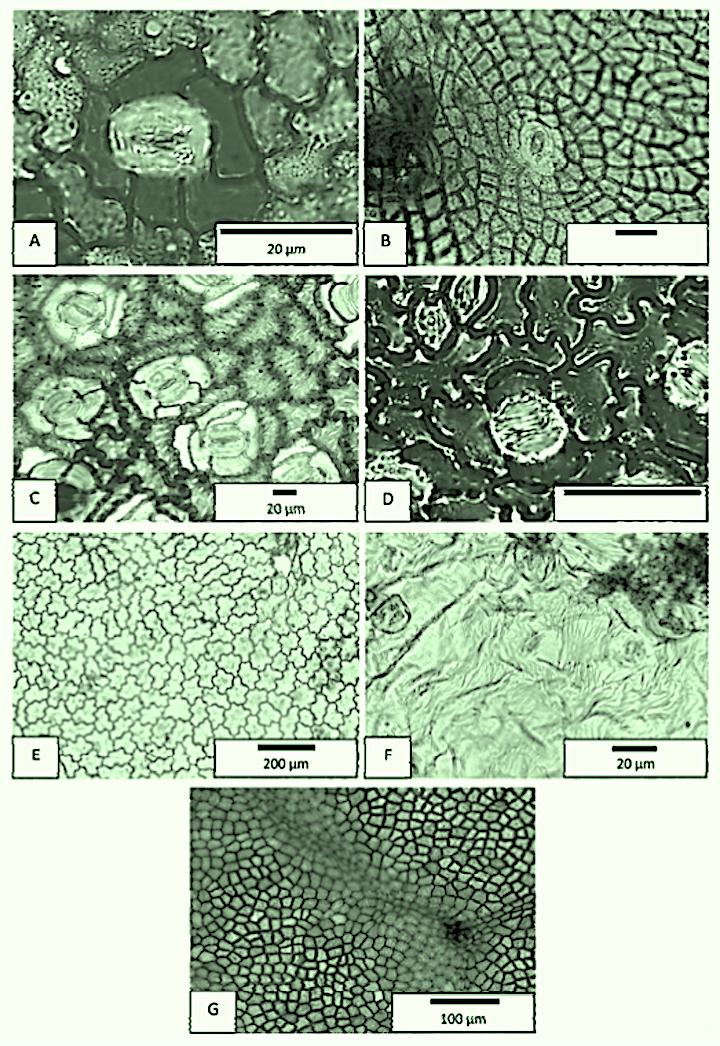
Cardiospermum halicacabum. A) Abaxial surface; B) Adaxial surface C) Sunken stomata with striae ornamentation;
Leaf anatomy and micromorphology of Cardiospermum halicacabum L. (Sapindaceae)
by Norfaizal G. M., Noraini T., Latiff A., Masrom H., Salmaniza S., Nurshahidah M. R. (2017)
In Malayan Nature Journal 69(2): x-x –
Abstract
Leaf anatomy and micromorphology characters of Cardiospermum halicacabum L. or locally known as peria bulan was investigated. Morphologically is a climber in the Sapindaceae, it has trifoliate leaves with minute stipules.
Results showed that this species has hypostomatic and anomocytic stomata, has non-glandular and glandular trichomes, and also secretory cells present in mesophyll sponge cells. Transverse sections of petioles and midribs showed that this species has petiole outlines with the presence of protruding structure (wings) on the left and right of adaxial side and U-shaped on abaxial side. Whereas in the midribs the protruding structures form into a hump on adaxial side and U-shaped on abaxial side.
Cuticle on the epidermal of leaf surface often showed the presence of striae in the epiphyll part and usually radiating from the stomata.
The results obtained in this study can be used to differentiate the leaf anatomy and micromorphology characters of Cardiospermum halicacabum from other geographical regions.
====
Hypostomatic, superficial, sparsely scattered on the abaxial epidermis surface. Elliptical shape. Stomata size: L (11.48–16.12 µm) xW (9.01-10.02 µm).

You must be logged in to post a comment.